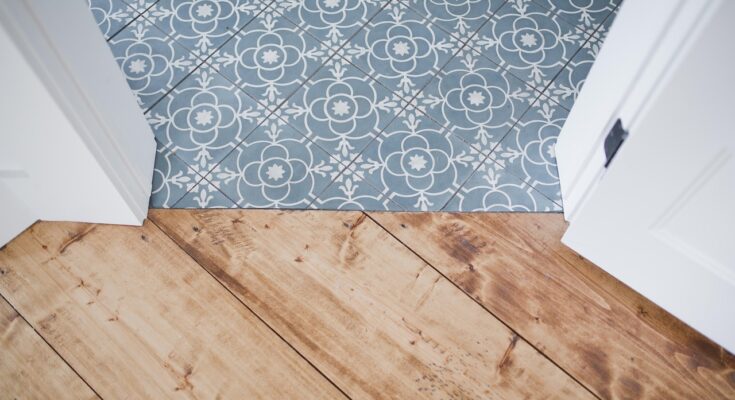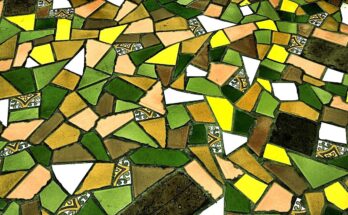ZonaJakarta – Porcelain floors are known for their good looks and serious toughness. They can handle water, messes, pets, and pretty much anything a busy household throws their way. Whether they’re laid out in a bright kitchen, a stylish bathroom, or even across a breezy outdoor patio, porcelain tiles have become a go-to for homeowners who want beauty without the constant babysitting.
But even though porcelain is built to last, that doesn’t mean you can ignore it completely. Like any surface in your home, it collects dirt, builds up grime, and benefits from a little regular attention.
Here’s a breakdown of how to take care of porcelain flooring—and keep it looking like new without turning floor care into a full-time job.
Daily Dirt Control Goes a Long Way
Let’s start with the basics. Dust, crumbs, and gritty debris don’t just sit quietly on tile—they slowly dull the surface over time if left alone. You may not see the wear right away, but over months and years, uncollected debris can leave your floors looking tired.
A soft broom or dry dust mop can take care of most of it in a few quick sweeps. If you prefer vacuuming, make sure your machine has a setting that’s safe for hard surfaces—some brush rollers are just too rough for tile and grout.
It’s a simple step, but doing this a few times a week helps prevent small particles from acting like sandpaper under your feet.
Mop Smarter, Not Harder
Porcelain doesn’t need heavy-duty scrubbing. In fact, too much cleaning with the wrong products can do more harm than good.
A light mop with warm water is usually enough for routine cleaning. If your floor needs a bit more help, use a gentle, tile-safe cleaning solution. Avoid anything too acidic or alkaline—bleach, ammonia, or vinegar-based mixtures can eat away at the finish or stain the grout.
Also, skip the soaking-wet mop. Too much water sloshed across the floor can weaken grout lines over time, especially if they’re not sealed. A damp mop that’s well wrung out will do the job without leaving puddles behind.
Spills? Handle Them Before They Set In
Porcelain itself is non-porous, which means spills won’t soak into the tile. That’s part of its charm. But the grout in between? That’s a different story.
Grout is porous and prone to staining. So when something spills—whether it’s red wine, coffee, or cooking oil—don’t let it sit. Blot it up quickly with a soft cloth, then wipe the area with a damp sponge or mop. The faster you clean it, the less likely it is to leave a trace.
In rooms where spills are frequent, like kitchens or bathrooms, consider sealing your grout if it hasn’t been done already. It’s a small step that can save a lot of scrubbing later on.
Protect the Tile from Heavy Hits and Dragged Furniture
Even though porcelain tile is harder than many natural stones, it’s not immune to damage. Drop a cast-iron pan on it or slide a metal chair the wrong way, and you might end up with a chip or hairline crack.
The easiest way to avoid this? Use protective pads on chairs and furniture legs. Put down rugs or mats in high-use spots—like under a dining table or near entryways—and never drag heavy furniture across bare tile. Lift or use sliders instead.
If a tile does crack or chip, it’s usually possible to replace just that piece. That’s another benefit of porcelain tile—it’s modular. Just make sure to save a few extras from your original batch in case you ever need to make repairs.
Keep an Eye on Grout—It’s Where the Dirt Hides
Grout tends to be the first part of any tile floor that starts to look tired. It gets darker in high-traffic areas, absorbs moisture in bathrooms, and tends to collect crumbs and grime that brooms leave behind.
Every month or so, give your grout a quick inspection. If it’s looking stained, mix a bit of baking soda with water into a paste and gently scrub with a soft-bristled brush. For deeper stains, use a grout-safe cleaner. Just don’t go in with anything too abrasive, or you’ll wear it down even faster.
Sealing your grout once a year helps prevent this kind of buildup. It also makes regular cleaning much easier—grime won’t cling to sealed grout the way it does to untreated lines.
Outdoor Porcelain Needs Some TLC Too
If your porcelain tile is installed outside—on a patio, porch, or balcony—it’s exposed to the elements in a different way. Rain, sun, dirt, and even plant debris can leave marks or cause surface buildup over time.
Give outdoor tile a rinse now and then with a hose and sweep it regularly to remove leaves, pollen, and grime. For deeper cleans, a gentle outdoor cleaner and a soft scrub brush will do the trick. Skip the power washer unless you’re confident it won’t damage the grout or loosen tiles.
Make Time for a Deeper Clean Every Season
Every few months, it’s worth taking the time to clean your porcelain floor more thoroughly. That means moving furniture, getting into corners, and giving the whole space a good scrub.
Use a tile-safe cleaner, focus on grout lines, and check for any cracks or loose tiles while you’re at it. This kind of deep clean doesn’t take much time—and it helps catch small issues before they become bigger problems.
Final Thought: Low Maintenance, Long-Term Payoff
Porcelain flooring isn’t fussy. That’s part of why people love it. But giving it a bit of regular care keeps it looking fresh, polished, and new—not just for a few years, but potentially for decades.
You don’t need fancy equipment or complicated routines. Just sweep often, mop smart, clean up spills early, and keep your grout in check. It’s a small investment of time that pays off with a beautiful floor that can stand up to whatever life throws at it.
Whether your porcelain tiles are laid out across a cozy bathroom or stretching through an open-concept living space, a little effort goes a long way in keeping them as impressive as the day they were installed. (*)




